Ijraset Journal For Research in Applied Science and Engineering Technology
- Home / Ijraset
- On This Page
- Abstract
- Introduction
- Conclusion
- References
- Copyright
A Study on Performance of Al-Si alloy Bearing with SAE20W40 as Lubricants in Constant Load and Varying Speed Condition
Authors: Sreenivasa Murthy B P, Prasad P, Thimmegowda M B
DOI Link: https://doi.org/10.22214/ijraset.2024.65995
Certificate: View Certificate
Abstract
Bearing is used to carry radial loads of transmitting members in motion is called as journal bearing. Journal bearings are considered as essential components of all the rotating machinery. Various researchers carried out analysis particularly on copper based alloys published information related to Aluminium-Silicon alloy as a bearing material and relevant information are not available. So in the present work it has been selected to carry out the study on performance of the Aluminium-Silicon alloy bearing by considering the SAE20W40 grade lubricating oils as lubricating mediums and study has been carried out to find out the maximum pressure distribution by using a journal bearing test rig. The Al-Si alloy as test bearing and test lubricating oils SAE20W40 is run at different loads and speeds either by constant load and varying speed conditions (Example; 150N, 300rpm). It is made to run for 1hour to take maximum pressure value at angular rotation of 180?. Sensor mounted on the bellow of the housing which gives the pressure readings and the data are transferred to the WINDOWS DUCOM 2010 software, extract condition of the bearings and gives the pressure distribution graphs as shown outcomes. In the results found by the graphs at all operating conditions of constant load and varying speed. The maximum pressure distribution of SAE20W40 grade oil is 1744kPa at 500 rpm. It can be conclude that the load carrying capacity and frictional force which acts on the journal and bearing material is safer, where frictional force decrease when speed increases.
Introduction
I. INTRODUCRTION
Bearing is used to carry radial loads of transmitting members in motion is called as journal bearing. Journal bearings are considered as essential components of all the rotating machinery. In the field of turbo machine components and automobile suspension system requires bearing to operate at high performances like higher speed, higher load and higher temperature conditions.
Non-Ferrous alloys like bronze, brass, aluminum have a wide range of applications in the heavily loaded and lightly loaded bearings. Aluminium bearings were developed to provide bearings to carry heavy loads. Aluminium-Silicon alloys is using widely in the industries at different fields. The Aluminium-Silicon alloy is the strongest alloy among the aluminium alloys. Features of Aluminium-Silicon alloy as bearing materials are having high thermal conductivity, corrosion resistance and high fatigue strength. [1]From the reviews of literature it has been observe that various researchers carried out analysis particularly on copper based alloys published information related to Aluminium-Silicon alloy as a bearing material and relevant information are not available. So in the present work it has been selected to carry out the study on performance of the Aluminium-Silicon alloy bearing.
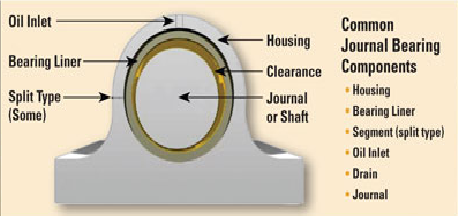
Figure 1.1: Journal bearing components
Aim of the project is to find pressure distribution by using different lubricants such as engine oil SAE20W50 and gear box oil SAE90 and to find solutions for the stresses develop on material. The study is carried out by using EN31 as journal material and the Brass 60 as bearing material with the dimensions inner diameter of journal EN31 is 39.965mm and bearing brass 60 inner diameters is 40.12mm. The maximum pressure values which is obtained after conducting experiments with different loading conditions and by varying the operating speed are noted down. [2]
In this paper the basic concepts of journal bearing which contains information on classifications of journal bearing, types of lubricants used in journal bearings, design and applications of journal and bearing are studied. The paper gives the complete guide lines on the choosing of journal bearing and its maintenances. According to the study a journal bearing used in this present work is hydro dynamic journal bearing. [3]
From the literature it has been observed that, these various researchers have made an attempt to study the behaviours of journal bearings with different lubricants particularly for copper based alloys, information related to aluminium based alloys is not available. Based on this an effort is made to study the performance on Aluminium- Silicon bearing by using SAE20W40 grade oils as lubricants with the following objectives.
The following are the specific objectives to the present work,
- To find out the maximum pressure distribution of Journal Bearing Test Rig by using SAE20W40 grade oil as lubricant.
- To estimate oil viscosity for different bearing loads and speeds.
- To determine the load carrying capacity and frictional force of journal bearing.
- To evaluate stresses analytically to validate life of bearing.
- To carry out comparative study of performance of lubricants.

Figure 1.2: Oil film thicknesses vs. angular position
II. METHODOLOGY AND EXPERIMENTAL WORK
The methodology adopted throughout this study is as shown below in the Figure, journal bearing test rig is fitted with the Al-Si alloy as test bearing and test lubricating oils is run at different loads and speeds either by constant load or by constant speed conditions (Example; 150N, 300rpm). It is made to run for 1hour to take maximum pressure value at angular rotation of 180?. Sensor mounted on the bellow of the housing which gives the pressure readings and the data are transferred to the WINDOWS DUCOM 2010 software, extract condition of the bearings and gives the pressure distribution graphs as shown outcomes.
The experimental procedure is repeated to note down to find the maximum and minimum pressure values of two different oils with the aluminium as the test bearing materials by different parametric conditions like varying loads and speeds graphs and reading are noted down. Finally the maximum and minimum pressure distribution of two different lubricants is compared.
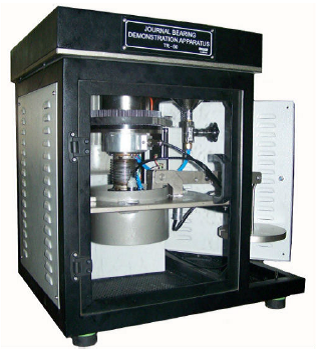
Figure2. 1 Pressure testing equipment (JBTR) [9]
A. Test Bearing Material
For any journal bearing, bearing material is an important part. In the start of hydrodynamic lubrication contact between metal to metal occurs. So a good bearing should have below properties,
- Conformability and deformability- To relieve high pressure.
- Embed ability- To permit small foreign particles to protect journal against wear.
- Compressive and fatigue strength- To withstand cyclic load under all operating conditions.
- Good thermal conductor- To dissipate frictional heat.
- Smooth surface for low shear strength.
- Material should be Corrosion resistance
Table 2.1 : Test bearing materials
|
Sl No |
Type of material |
Specification |
Application |
|
1 |
Aluminium-Silicon alloy |
Density: 2.78 g/cc Elastic modulus: 73.1 GPa Ultimate strength :814 MPa Shear Strength:283 MPa Composition:Silicon-6%, Remaining is all Aluminium |
Bearing material |
|
2 |
EN31- Steel |
Tensile strength: 750 MPa Yield stress: 450 MPa Modulus of elasticity:215000 MPa Density: 7.8 kg/m3
|
Journal material |
B. Lubricants used for experiment
Table 2.2: Shows the SAE20W40 and SAE80W90 Grade oil description. [10]
|
SAE GRADE |
20W40 |
80W90 |
|
Kinematic viscosity@100?c,cSt |
15.5 |
17.0 |
|
Viscosity Index,Min. |
110 |
100 |
|
Flash point,COC,?c,Min |
200 |
165 |
|
Pour point,?c,Max |
(-)21 |
(-)27 |
SAE20W40 Grade Oil: This oil is high performance engine oil and procured by Servo oil and lubricants having the description followed by Table 2.2. The term “W” stands for winter grade oil, where “20” indicates viscosity at low temperature and “40” indicates viscosity at high temperature of the oil. [10]
Performance characteristics,
- Easily engine can be started at low temperature
- Good engine working performance at low and high temperature conditions.
- Reduces wear of engine parts
III. RESULT AND DISSCUSIONS
A. JBTR results for Al-Si alloy bearing using SAE20W40 grade oil
Al-Si alloy bearing is used to find the pressure distribution experimentally by using journal bearing test rig (JBTR) with the SAE20W40 grade oils as lubricating oils. The oil tests are carried out by Constant load and variation of speed.
B. By using SAE20W40 as lubricating oil at constant loading condition.
To find the pressure distribution of SAE20W40 oil at constant load and variations of speed method. In this method four tests are carried out, in each test load is constant and varying the speeds. The following table indicates the four tests are carried out by fixing the load and varying the speed of bearing.
Table3.1: SAE20W40 constant load and varying speed conditions.
|
Test |
Applied constant load in Newton(N) |
Varying speeds of bearing in rpm |
|||
|
1 |
150 |
300 |
500 |
700 |
1000 |
|
2 |
400 |
300 |
500 |
700 |
1000 |
|
3 |
550 |
300 |
500 |
700 |
1000 |
|
4 |
700 |
300 |
500 |
700 |
1000 |
The above four test results of each test are briefly discussed in the following points.
The values of pressure distribution at a constant 150N load with variations of speed in rpm for SAE 20W40 oil shown in Figure. The maximum pressure value is 234.4 KPa at 150N load, maximum speed of bearing is 500 rpm at an angle of 75 degree.
The minimum value of pressure is 172.3 KPa at 150 N constant loads, 1000 rpm speed of bearing at an angle of 70 degree. The pressure value is increasing up to the maximum value of 234.4 KPa with 500 rpm and suddenly pressure is decreasing are represent in the graph.
The values of pressure distribution at a constant 400 N load with variations of speed in rpm for SAE20W40 oil shown in Figure. The maximum pressure value obtain for the 400 N constant load applied to bearing is 916.9 KPa at bearing speed 500 rpm and corresponding angle 80 degree. The minimum value of pressure value is noted at the bearing speed 700 rpm and the corresponding minimum pressure value is 792.8 KPa. The pressure value is up to 30 degree angle is horizontal then suddenly rise in pressure are represent in graph.
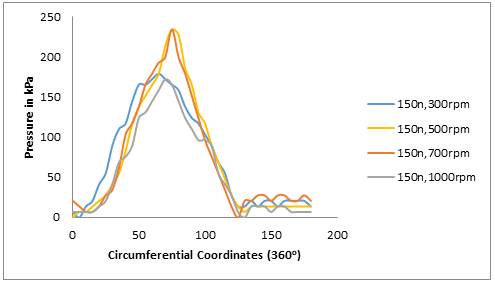
Figure 3.1: Pressure distribution vs. Circumferential Coordinates (360o) graph for constant load of 150N
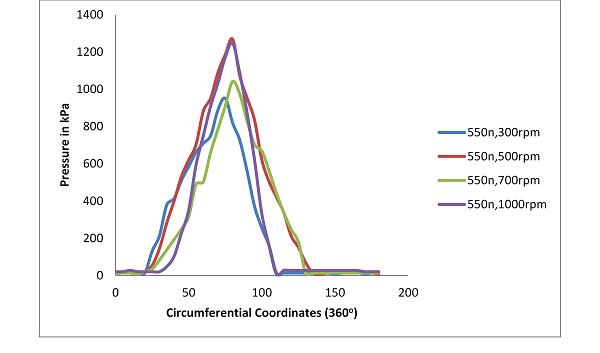
Figure 3.2: Pressure distribution vs. Circumferential Coordinates (360o) graph for constant load of 400 N
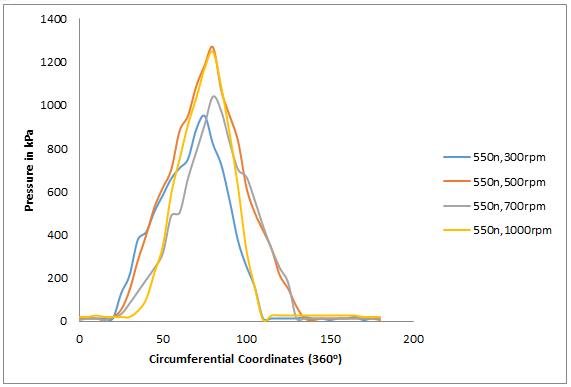
Figure 3.3: Pressure distribution vs. Circumferential Coordinates (360o) graph for constant load of 550 N
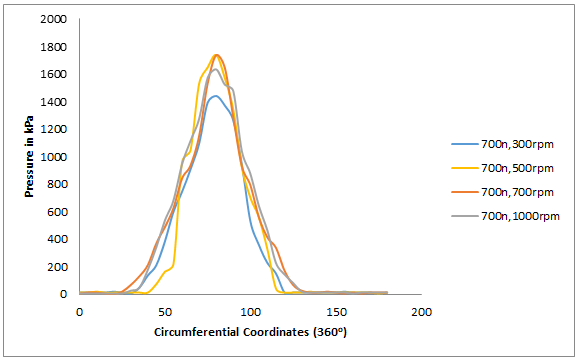
Figure 3.4: Pressure distribution vs. Circumferential Coordinates (360o) graph for constant load of 700 N
Graph of Pressure distribution at a constant 550 N load with variations of speed in rpm for SAE20W40 oil shown in Figure 3.3. Load are fixed for different conditions of speed and obtain the maximum pressure value for the 550 N constant load is 1268.5 KPa at bearing speed 500 rpm and corresponding angle 80 degree. The minimum value of pressure value is noted at the bearing speed 700 rpm and the corresponding minimum pressure value is 951.4 KPa corresponding value of angle is 75 degree.
The values of pressure distribution at a constant 700 N load with variations of speed in rpm for SAE20W40 oil, 700 N Load are fixed for different conditions of speed 300 rpm. 500 rpm, 700 rpm and 1000 rpm used and obtain the values of the journal bearing and obtain the maximum pressure value for the 700 N constant load is 1737.3 KPa at bearing speed 500 rpm and 700 rpm, corresponding angle 80 degree as shown in Figure 5.4. The minimum value of pressure value is noted at the bearing speed 700 rpm and the corresponding minimum pressure value is 1140.8 KPa corresponding value of angle is 80 degree.
C. Result tabulations of SAE20W40 constant load and varying speed conditions
Table 3.2: Constant load varying speed SAE20W40 all four cases test results
|
Oil SAE 20W40 Constant Load |
300 rpm |
500 rpm |
700 rpm |
1000 rpm |
|
|
150 N load |
Max pressure in KPa |
165.5 |
234.4 |
234.4 |
172.3 |
|
Circumferential Coordinates(360o) In degree |
75 |
75 |
75 |
70 |
|
|
400 N load |
Max pressure in KPa |
868.6 |
916.9 |
792.8 |
910 |
|
Circumferential Coordinates(360o) In degree |
80 |
80 |
80 |
75 |
|
|
550 N load |
Max pressure in KPa |
951.4 |
1268.5 |
1041.2 |
1247.8 |
|
Circumferential Coordinates(360o) In degree |
75 |
80 |
80 |
80 |
|
|
700 N load |
Max pressure in KPa |
1440.8 |
1737.3 |
1737.3 |
1633.9 |
|
Circumferential Coordinates(360o) In degree |
80 |
80 |
80 |
80 |
|
D. Viscosity calculations of SAE20W40 and SAE80W90 grade oils:
To measure the viscosity of the oils after physical test the Say bolt viscometer is used:
1) Say bolt viscometer observation and calculations:
T= Temperature of oil at equilibrium condition in ?
S= Say bolts second
M1= Mass of empty flask in grams
M2= Mass of flask with oil I grams
ρ= Density of oil in Kgm3
Density of oil in Kgm3
=MassofoilVolumeofoil=(m1-m2)×10-660000
γ=Kinematicviscosity= 0.226S-180S×10-6inm2secS<100secEq.1
γ=Kinematicviscosity= 0.226S-180S×10-6inm2secS>100secEq.2
2) For SAE20W40 grade oil
Table 3.3: Tabular column for SAE20W40 grade oil test.
|
Sl No |
Temperature in ? |
S in sec |
M1 in grams |
M2 in grams |
γinm2sec |
|
1 |
35 |
75 |
14 |
60.05 |
7.64×10-6
|
γ=0.226×75-18075×10-6
=(16.95-2.4)×10-6
γ=7.64×10-6m2sec
Conclusion
The following conclusions are drawn from the analysis of data obtained by conducting detailed experimentation. In the results found by the graphs at all operating conditions of different load and speed. The maximum pressure distribution of SAE20W40 grade oil is 1744kPa The maximum pressure occurs during the 160°-170° it shows the sudden rise in pressure the short duration it shows the stability of the bearing. The maximum pressure distribution is occurred where thickness of oil film is minimum and pressure at zero in a cavitation zone. The load and speed on bearing increases the pressure distribution. It is observed that variation of pressure of the SAE20W40 with a small variation of 10 to 15% after comparison of obtained calculated by using Say bolt viscometer. It can be conclude that the load carrying capacity and frictional force which acts on the journal and bearing material is safer, where frictional force decrease when speed increases.
References
[1] Das B N and Banerjee S K, “ Scope of Aluminium Base Bearing Alloys” Scientists, national Metallurgical Laboratory, Jamshedpur. [2] Srinivas. S, “Performance Evaluation of Journal Bearing Using SAE 90 Grade and SAE20W50 Grade oil by Experimental and Analysis Methods” Project at SJC Institute of Technology, 2015. [3] Priyanka Tiwari and Veerendra Kumar, “Analysis of Hydrodynamic Journal Bearing: A Review”, International Journal of Engineering Research & Technology, 2012. [4] Majumdar B.C, “Introduction To Tribology of Bearing”, Wheeler Publishing, New Delhi, 2001. [5] Ray D. Kelm P E, “Journal Bearing Analysis” Kelm Engineering, Danbury. [6] Raajeshkrishna R. Govindraj, “Design of Journal Bearing Test Rig” Blekinge Institute of Technology, Karlskrona, Sweden, 2012. [7] Gregory F. Simmons, “Jounranl Bearing Design, Lubrication and Operation”, Lulea University of Technology. [8] Malcolm E. Leader, P.E, “Understanding Journal Bearings”, Applied Machinery Dynamics, Durango, Colorado. [9] “Manual of DUCOM INSTRUMENTS”, DUCOM INSTRUMENTS PVT.LTD, Bangalore. [10] “SERVO PRODUCT DATA SHEET”, Technical Services Department, Indian Oil Corporation Ltd.
Copyright
Copyright © 2024 Sreenivasa Murthy B P, Prasad P, Thimmegowda M B. This is an open access article distributed under the Creative Commons Attribution License, which permits unrestricted use, distribution, and reproduction in any medium, provided the original work is properly cited.

Download Paper
Paper Id : IJRASET65995
Publish Date : 2024-12-18
ISSN : 2321-9653
Publisher Name : IJRASET
DOI Link : Click Here
 Submit Paper Online
Submit Paper Online




